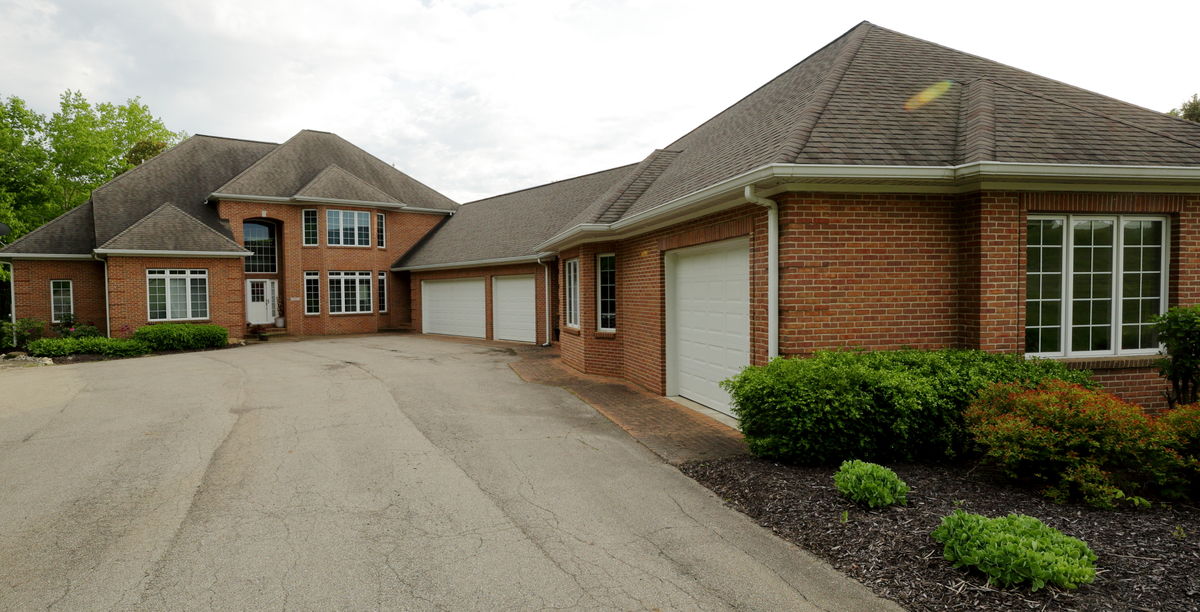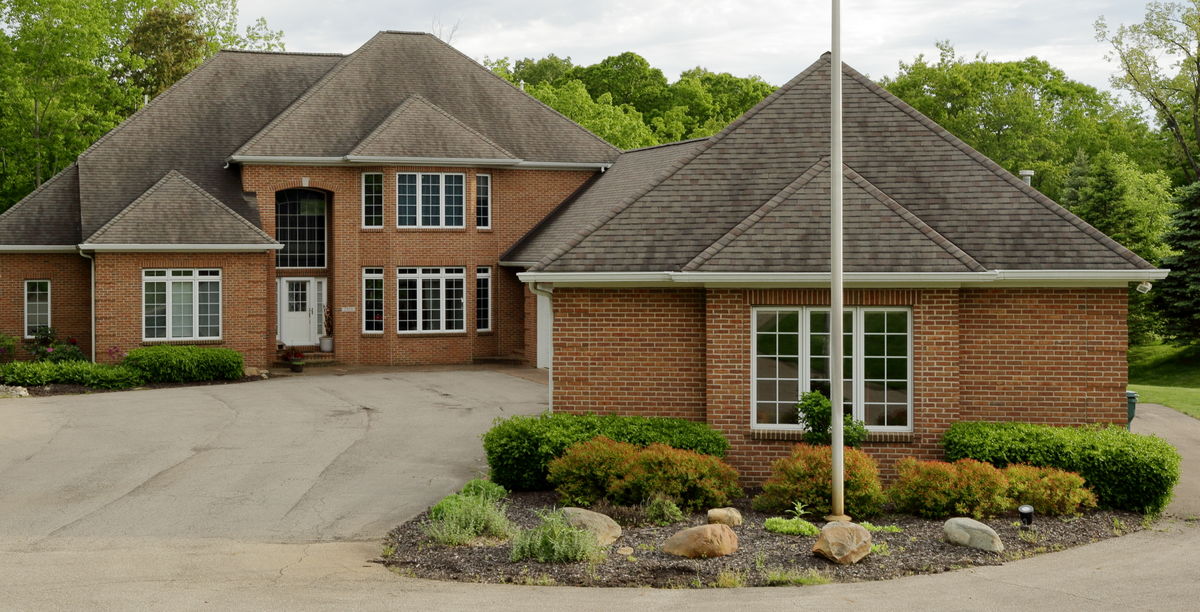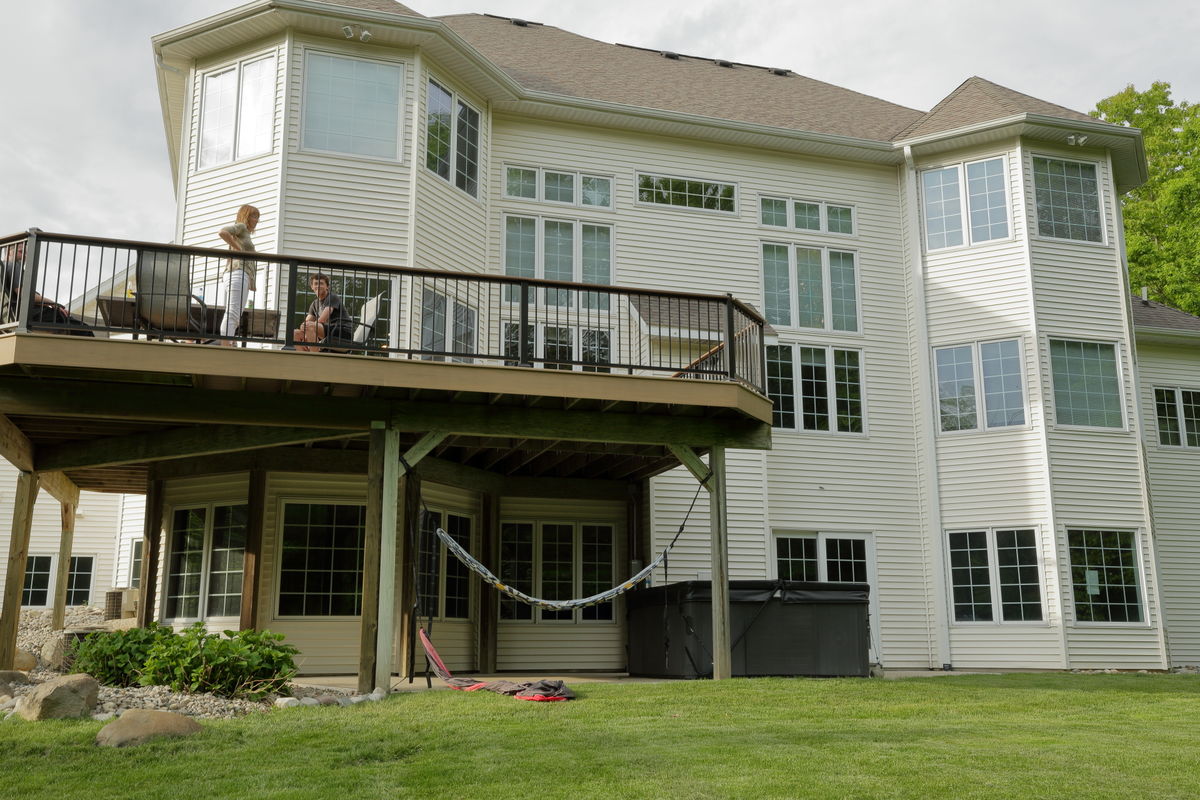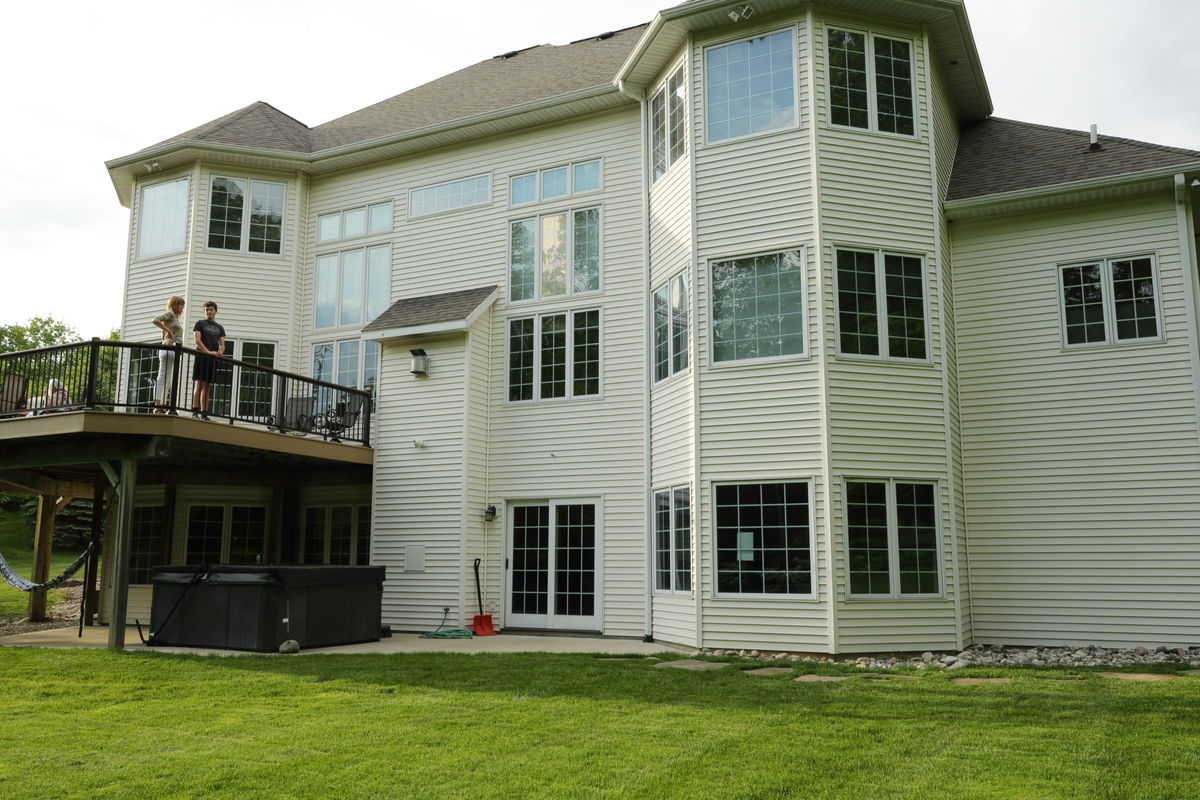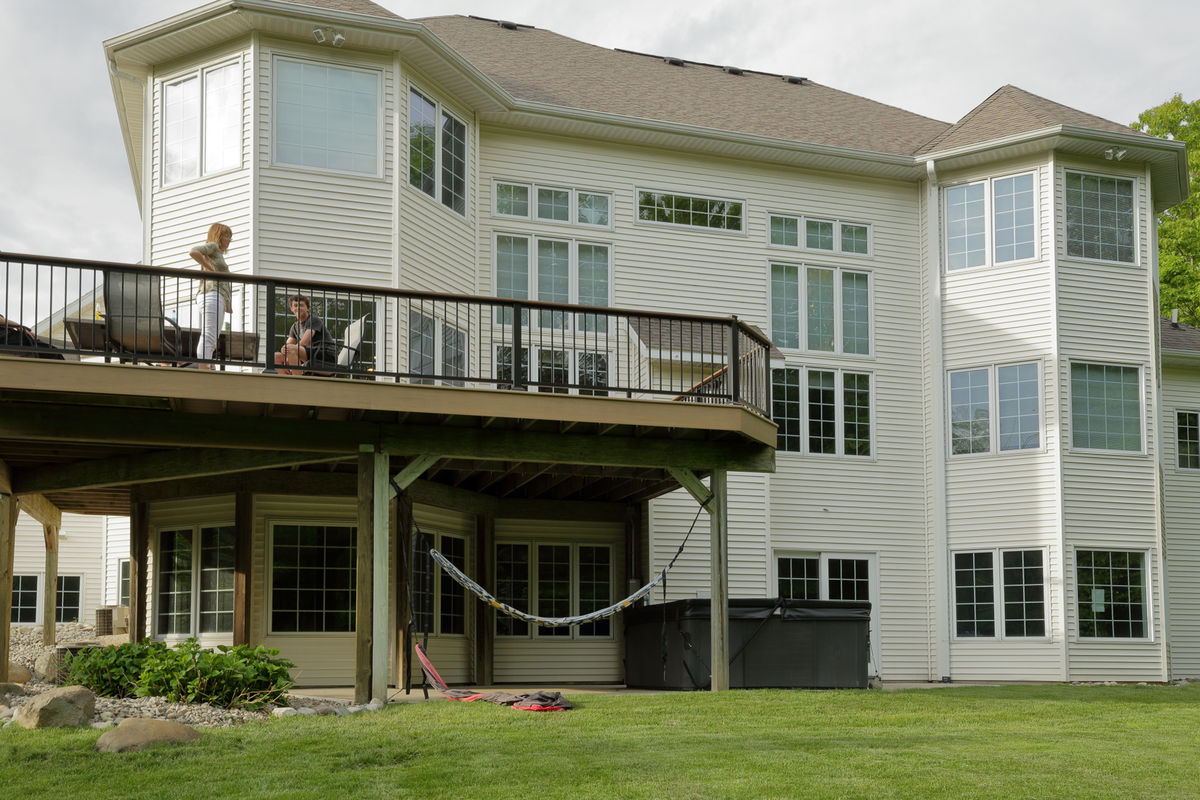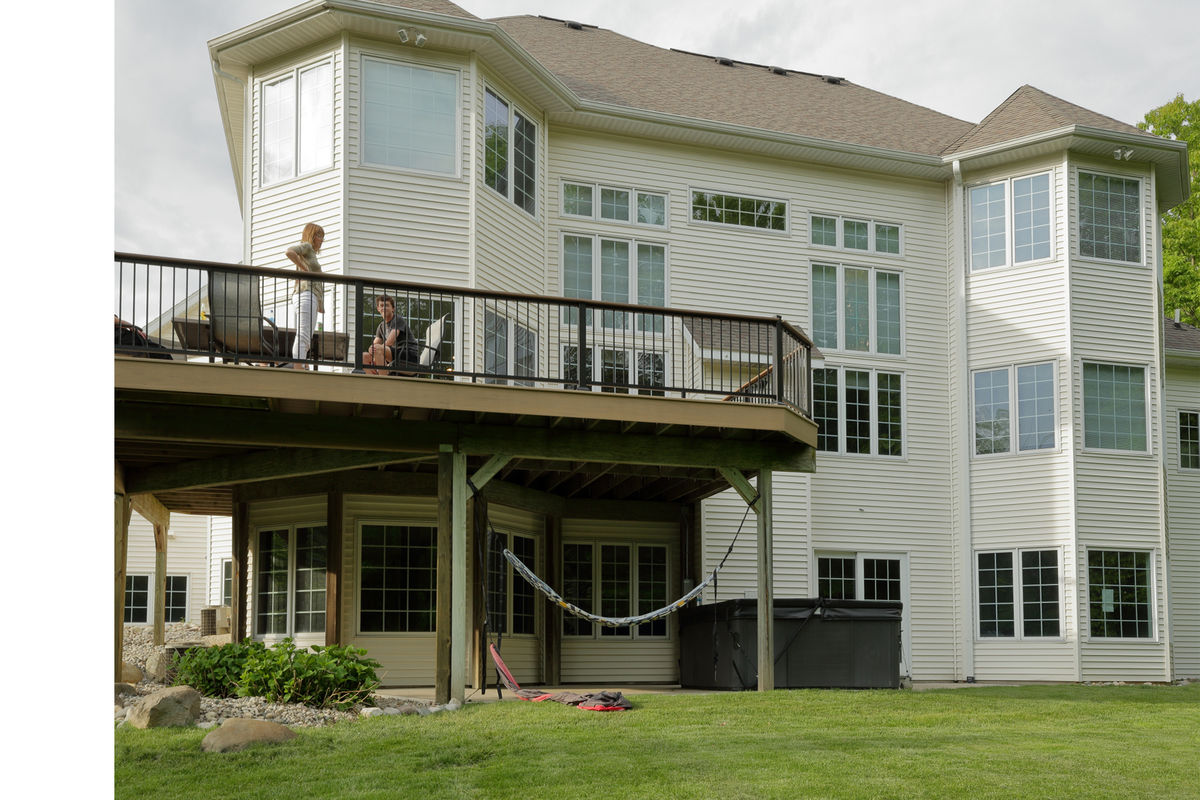Distortion
Jun 3, 2022 16:27:00 #
My d-in-law wanted us to check out their newly remodeled deck. The gear used for these shots were Canon 5DIII, and a 16-35 F2.8 III. Av was F11 or F16. I don't have any serious issues with the front images but I was disappointed with the fairly severe distortion on those in back. I expected a little better performance from a top of the line lens.
The only difference I can figure out is the shooting angle. I was shooting at level or slightly above in front while the back images were shot, angled up from a significantly lower position.
And you say??
The only difference I can figure out is the shooting angle. I was shooting at level or slightly above in front while the back images were shot, angled up from a significantly lower position.
And you say??
Jun 3, 2022 16:31:48 #
You’re distortion is a result of tilting the lens upward from level. It is not the result of a poorly designed lens.
Jun 3, 2022 16:43:22 #
rcarol wrote:
You’re distortion is a result of tilting the lens upward from level. It is not the result of a poorly designed lens.

Jun 3, 2022 16:48:47 #
rcarol wrote:
You’re distortion is a result of tilting the lens upward from level. It is not the result of a poorly designed lens.
I rarely

 But, this comment could not have captured the root-cause any clearer.
But, this comment could not have captured the root-cause any clearer.You can't find a wide / wider-angle lens that doesn't give this distorted view when you fail to hold the camera / lens level. Of course, many times you can't get the scene / subject you're trying to view without that tilt. Now your skills as a digital editor are exercised forcing you to see how well your preferred software performs in <auto>, or even how you need to manually adjust the image to perfection.
Rarely is the equipment to blame when you really closely look at the root-causes.
Jun 3, 2022 16:50:35 #
raymondh wrote:
My d-in-law wanted us to check out their newly rem... (show quote)
Are we looking at JPEGs from the camera or your edited versions? If from the camera, have you used the EOS utility to download and install the lens profile for this lens released after the ancient EOS 5DIII? That could have an impact on how / how well the distortion is addressed by the camera and this lens.
I see the posted images come from DPP. Into DPP also the lens profile has to be downloaded and installed. When editing the RAW, here you have some correction tools beyond the <auto> correction of the software. Commercial software have even more / more powerful tools for these corrections.
Jun 3, 2022 17:10:21 #
rcarol wrote:
You’re distortion is a result of tilting the lens upward from level. It is not the result of a poorly designed lens.



Jun 3, 2022 17:11:23 #
Jun 3, 2022 17:17:10 #
raymondh wrote:
My d-in-law wanted us to check out their newly rem... (show quote)
Your last few sentences answer your own question. Why do you think some photographs are taken from a "Cherry Picker" or some other sort of lift? There is nothing wrong with your lens or camera. Try it with a 10mm or 11mm and you will be more disappointed.
Are all four images supposed to be of the same house? Looks like two rather different ones to me.


Jun 3, 2022 17:30:41 #
rcarol wrote:
You’re distortion is a result of tilting the lens upward from level. It is not the result of a poorly designed lens.


Jun 3, 2022 17:54:00 #
amfoto1
Loc: San Jose, Calif. USA
rcarol wrote:
You’re distortion is a result of tilting the lens upward from level. It is not the result of a poorly designed lens.
This is correct.
You would see similar perspective distortion with ANY lens, when you shoot a tall object like a 2 story home from ground level, with the camera tilted upwards. This effect is called "keystoning", because the building ends up shaped like a keystone in an arch. The reason the two shots of the front of the house don't show it (much) is because you weren't tilting the camera upward.
Canon sells Tilt Shift lenses that help reduce this effect, but don't completely eliminate it. I use the Canon 24mm TS-E and 45mm TS-E lenses for architecture, products and some other situations, to help control perspective distortion, usually in combination with post-processing, as described next...
Some of it can be corrected in Photoshop. This is a bit tricky in this case, because your image is so tight. When I know I'll be doing a perspective correction (the effect should have been visible in your viewfinder) I try to give more space around the subject because the correction always ends up cropping part of the image. In other words, I allow a bit of room for that crop.
Below is one of your images correctly using Photoshop Edit > Transform > Perspective. It is probably far from perfect. Doing this "stretches" part of the image while "compressing" another. As a result people and other objects within the image may become distorted. In fact, after looking at it again, I might have overdone the correction a little. It might look more "natural" to leave just a little of the perspective distortion.
EDIT: I made some more adjustment to reduce the amount of "stretch" that the perspective correction put into the left side of the image. Uploading a second version, which I left uncropped so you could see what was done. Of course, I'm just guessing on the proportions and how the house should look from this angle.
Jun 3, 2022 18:12:34 #
CHG_CANON wrote:
Are we looking at JPEGs from the camera or your ed... (show quote)
Yes, on all accounts.
Jun 3, 2022 18:17:31 #
rcarol wrote:
You’re distortion is a result of tilting the lens upward from level. It is not the result of a poorly designed lens.
Do you suppose that if one were to tilt the lens downward from level, the same level of distortion would occur?
Jun 3, 2022 18:18:48 #
lamiaceae wrote:
Your last few sentences answer your own question. ... (show quote)
Same house. Thanks for your input!
Jun 3, 2022 18:38:32 #
amfoto1 wrote:
This is correct. br br You would see similar pers... (show quote)
I certainly appreciate your response & explanation. I am familiar with some of these terms like keystoning . . . but when you read reviews of lens that have improved barrel or pincushion distortion, well these obviously are in a different category of image "flaws" than keystoning.
Jun 4, 2022 00:41:07 #
amfoto1 wrote:
....It might look more "natural" to leave just a little of the perspective distortion....


(Perspective distortion is also referred to as convergence because the verticals appear to converge at the top (or the bottom if the lens is tilted down).
If you want to reply, then register here. Registration is free and your account is created instantly, so you can post right away.

